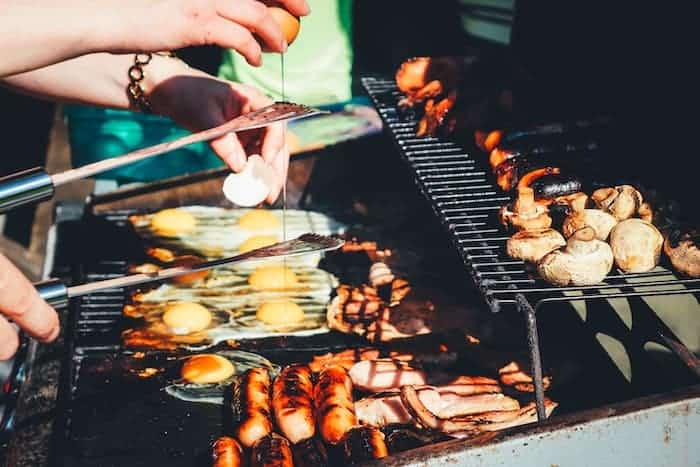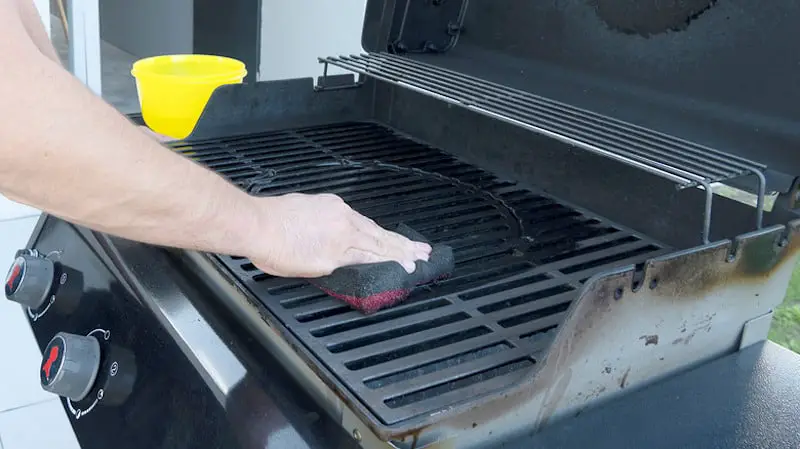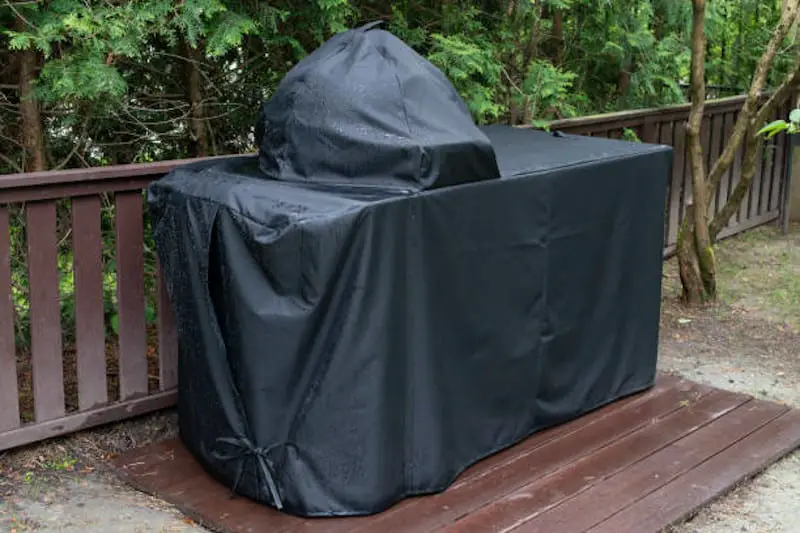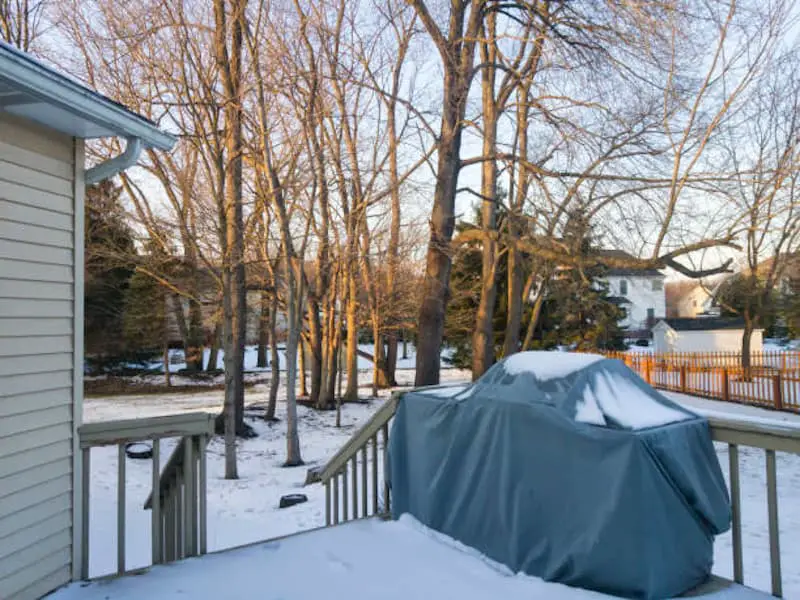
Picture this: It’s a nice sunny day out, and your family from out of town is over for the weekend. Everyone’s gathered out in the back by the pool, talking, laughing, and generally having a good time. The question is – what are you most likely going to have to eat?
It’s genuinely picturesque because the very first thing that comes to mind is some old gold barbecue. You could have burgers, steak, or anything of the kind. However, the stage is practically set, and the only thing that can tie it all together is food. Nothing screams homely like barbecue.
The question, however, isn’t over whether barbecue sounds good or not (it always does). Instead, what sort of grill you’d be using, where would you place it, and how would you secure it?
Why Should You Secure Your Grill?
Simply put, there are two broad types of grills; simple portable kettle ones and built-in masonry grills. You need to be able to secure the grill for several reasons, primarily:
- To keep it from ‘walking away.’
- To dedicate a particular area in the back porch for grilling
- To secure the grill from tipping over while using it
- To keep anyone from tripping over it
- If installed well enough in the home, a grill could aid in appraising your home should you decide to sell it
And a whole lot of other reasons. Suffice to say, securing a grill is a pretty good idea. The next question is, what are you going to connect it with?
First of all, if you’re buying a grill instead of having barbecue delivered over to your house, it’s safe to assume that you (or someone in your family) are either a grill master or one in training. A simple padlock won’t do the job. You’ll need something more concrete – pun intended.
1. Choosing the Right Spot
Notwithstanding the fact that it’s your property, you can not secure a grill wherever you want. First of all, you’ll need to secure it at a location where you feel like you’ll get the most use out of it. For example, securing it near the patio or under a green roof would just accumulate soot where there shouldn’t be any.
Secondly, it’s more about keeping the grill where it’s less likely to get stolen. While securing a grill with concrete does keep it from being picked up and walked away with, some people might just take away parts of it to sell for scrap.
Alternatively, if you’re securing a grill grate onto concrete, i.e., making a built-in grill, you need to use an area that’s well-balanced enough and clear from any sod.
2. Understanding the Anatomy
You could either be looking for a way to secure a store bought grill onto concrete or looking to build one of your own in concrete. In the second case, it’s essential to make a design before you get to buy products.
Generally, built-in grills follow the same pattern:
- A base
- A charcoal pan or an ash pan
- A grill gate – ideally go with something that doesn’t need to be replaced as often and is sturdily built
- An inner fire box – also known as a refractory block made of heat resistant materials to keep heat inside the structure
- And an outer solid brick wall
3. Pouring Concrete
If you’re securing a kettle grill onto concrete, you’ll need to dig an area in your porch deep enough to secure a bucket (or any similar alternative) into it. Why? Because your prime concern here is security of the grill that you might decide to move around.
Hence, securing the grill entirely to concrete isn’t as advisable as it is to secure it just enough to keep it from disappearing. The bucket is filled with concrete, and just while it’s setting, you insert an eye bolt into the concrete.
Then add soil back to the area and secure the eye bolt with a nut. You basically created an anchor for the grill. This anchor can help in securing the grill with a pad lock and a chain.
Alternatively, if you were making an in-built BBQ with a grill grate, you’ll need to make some measurements. Firstly, measure the area for the concrete slab. Use the grates as a reference with enough leeway at the edges to keep it secure.
Determine whether you want a grill with one layer of bricks, two, or even three. Make your measurements accordingly and clear off the soil. Excavate the area up to a depth of around 8 inches and level the compact onto the ground with gravel till a height of 3 inches before compacting again.
Pour cement onto the gravel to fill the hole up to ground level and then smooth it out using a towel. Follow the instructions by the manufacturer listed on the back. However, as a general rule, cement needs a day or two to harden properly.
4. Laying Down Bricks
Before you get to mixing your concrete and laying down mortar, it’s best if you lay down your bricks dry onto the concrete slab. Understandably, only lay down the very first layer of bricks with about an inch of leeway between the bricks. This is to envision and take into account the area filled by the concrete and give you a general idea of the design.
Mix mortar and lay it onto the concrete slab. Place the bricks onto the mortar one by one. With each brick, you secure, place some concrete on its side for the other brick instead of jamming it in there.
Lay down other layers on top of the first one and remove the excess cement using the appropriate tools. It is essential to keep the entire structure from looking messy.
If you just lay bricks on top of one another without removing the excess concrete, you’ll be in for more work later on when you need to chisel down the set concrete for refinement.
5. Designing and Leveling
Following particular designs for the grill isn’t just for show. Sometimes particular designs help in varying heat intensities and make the grill as efficient as possible.
Leveling is essential to keep the structure stable and maintained. You won’t want the grill to fall if anyone bumps up against it. It defeats the entire purpose of securing it.
6. Final Touches
For final touches, refine the structure with a cold chisel where necessary, add in more bricks where you feel like they might be needed. Clear out some area for the grill. Final touches are for refinement and should be done keeping in mind your initial design and how much your final product varies from it.
Conclusion
All in all, securing a store-bought or a grill grate onto concrete is an excellent idea for more reasons than one. It provides the family with their own space for homely conversations, light-hearted fun, and just getting everyone together on a nice day.
Securing one to concrete is better than any other alternative, such as padlocking it or having to move one out each time from the garage. It’s a fun and straightforward project with an outcome most undoubtedly worth it!
See Also:
How to Light a Gas Grill without Ignitor (5 Steps)
Can You Use Parchment Paper On The Grill
Cast Iron Skillet Vs Grill Pan For Steak
Grill Pan vs. Skillet: Here Are Difference




